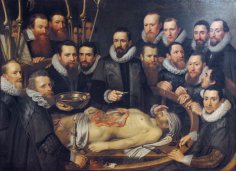This is the oldest known fossil of a modern bird.

DJ Field/University of Cambridge. A 3D-printed replica of the small skull of Asteriornis Maastrichtensis, also known as the Wonder Chicken.
The fossils, including a beautifully preserved skull and several limbs, were found inside a small rock in Belgium. The rock was made of hardened marine sediment, and the few bones protruding from it initially seemed insignificant. However, the supposed age of the bones piqued Field's interest.
The team used a technique known as tomography, which is essentially a type of X-ray, to study the inside of the rock without damaging the fossil.
When the team discovered the small bird skull, they couldn't believe their eyes.
“The timeline of events was: see the skull, go 'Oh, shit!', high-five my grad student, and then start calling him the Miracle Chicken,” Field said, barely hiding his initial surprise.
Wonderchicken is thought to have had wings, a beak, and was about the size of a quail. Interestingly, only the front portion of Wonderchicken's skull, including the beak, actually resembles a chicken's. Thus, Field suggests that A. maastrichtensis was not a picky eater like modern chickens.
“A farm chicken will eat anything you put in front of it,” Field explained. That’s why, unlike many birds, chickens don’t have a specialized beak shape. Instead, they have a beak that allows them to eat a wider variety of foods. Wonderchicken likely depended on a varied diet to survive.
“A generalist diet is a trait that could have helped creatures like Wonderchicken survive,” Field noted, especially during a crisis like an asteroid-induced mass extinction.
However, there are other parts of the Wonder Chicken's skull that resemble a duck.
Sourse: www.allthatsinteresting.com





